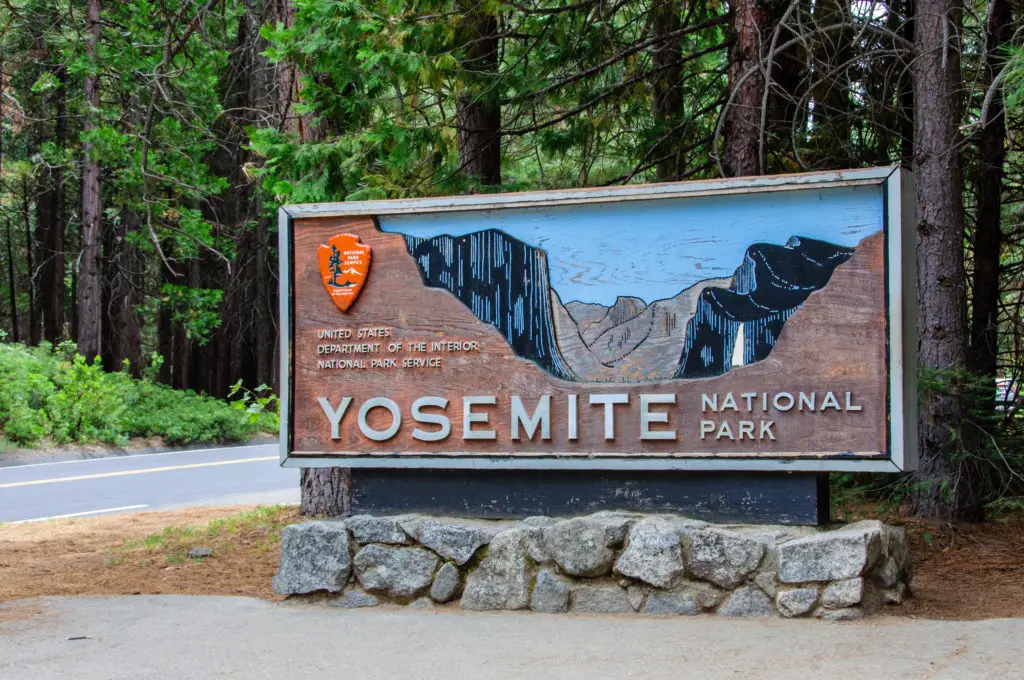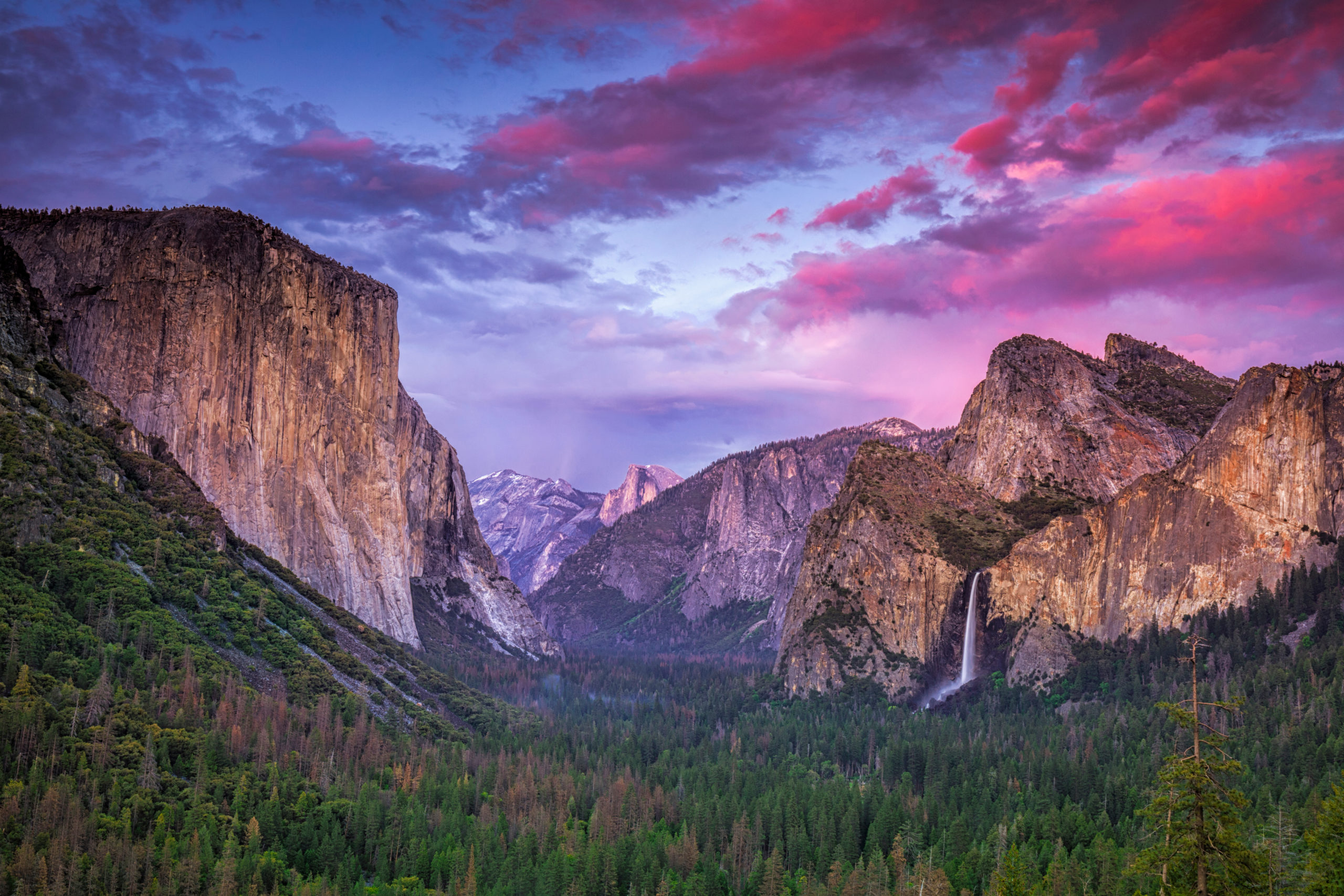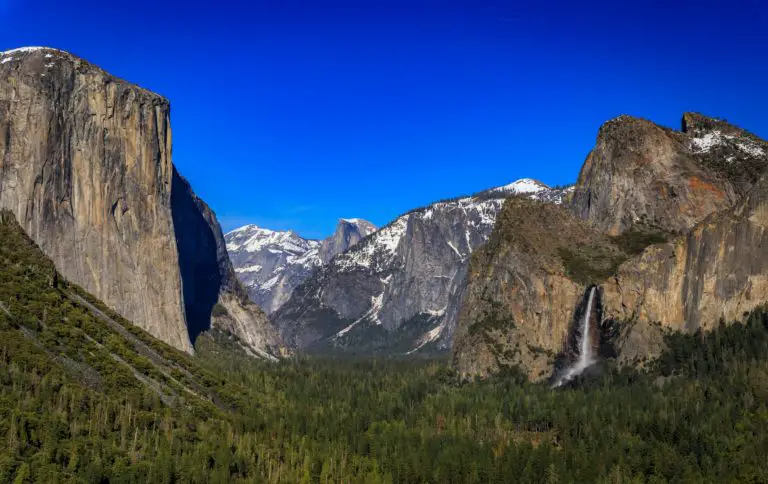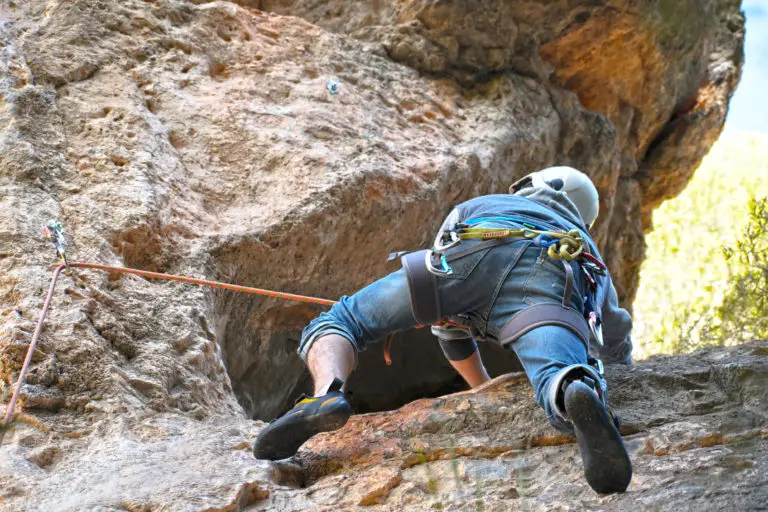Nestled in the heart of the Sierra Nevada Mountains in California, Yosemite National Park is a natural wonderland that beckons adventurers and nature enthusiasts from all corners of the globe. Known for its iconic granite cliffs, towering waterfalls, pristine alpine meadows, and diverse wildlife, Yosemite is a must-visit destination for anyone seeking an immersive outdoor experience. With its rich history and breathtaking landscapes, the park offers a myriad of activities and opportunities to connect with the natural world.
However, it’s important be cautious and aware of some of the natural phenomenons taking place at the park that can dampen the fun!

Climbing in Yosemite: New Crack Closes Popular Trail
A week ago, climbers exploring Yosemite discovered a new crack close to the Royal Arches precipice. An investigation that followed, according to park officials, determined that active cracking was occurring; as a result, sectors of the park have been closed as a safety precaution.
The crack, which first became apparent to park rangers during a routine inspection in late spring, has raised concerns about the safety of climbers and hikers alike. Yosemite’s granite cliffs are renowned for their natural beauty and challenging climbs, but they are also subject to geological forces that can lead to sudden changes. The appearance of this new crack underscores the dynamic nature of the park’s landscape and the importance of ongoing monitoring to ensure visitor safety.
The recently formed crack has caused a substantial rock pillar in close proximity to the Super Slide climbing route to become partially detached. While investigations continue, the National Park Service is implementing trail closures to mitigate the potential for rockfall. Since August 30th, the closures have been in effect and will continue until additional notice.
“During the following week, a climbing ranger and a geologist had the opportunity to witness this phenomenon firsthand. They described the sound as akin to that of a frozen lake with unstable ice. Jesse McGahey, a Supervisory Park Ranger at Yosemite National Park, shared this account with Climbing, stating, ‘There were pieces of rock rattling down the crack without any direct contact.’ The park’s geologist, with 15 years of experience in Yosemite, expressed that he had never encountered anything quite like this before.”
The crack is said to have advanced approximately one inch over the course of seven days, but the ramifications of this development for the future remain uncertain. The potential descent of the sizable granite pillar that park officials are apprehensive about could occur immediately or take years; however, until they obtain a more comprehensive understanding of the danger, certain areas of the park will remain off-limits.
Rockfalls in Yosemite Valley
Rockfalls are not unusual occurrences in Yosemite Valley, a place where steep cliffs were sculpted by the actions of glaciers. This ever-changing terrain contributes to the park’s natural beauty. However, witnessing rockfalls up close is something you would likely prefer to avoid.
Rockfalls are geological phenomena in which rocks, ranging from small boulders to massive granite slabs, break loose from the cliffs and tumble downward. Yosemite Valley, with its towering granite formations like El Capitan and Half Dome, is particularly susceptible to rockfalls due to the intricate interplay of geological processes. While these events have been occurring for thousands of years, understanding the causes and consequences of rockfalls is critical for ensuring the safety of park visitors and preserving the valley’s natural beauty.
Several factors can trigger a rockfall event in Yosemite Valley. One of the most common triggers is temperature variation. During the day, the sun’s heat can cause the rock to expand, and at night, cooling temperatures lead to contraction. This daily expansion and contraction can stress the rock, potentially causing fractures to grow larger over time. Heavy precipitation can also be a factor, as water infiltrates cracks and increases the weight on unstable portions of the cliffs.
According to the National Park Service, “Various factors, such as water, ice, seismic activity, and the growth of vegetation, can serve as triggering mechanisms for rockfalls. When water infiltrates fractures in the bedrock, it can exert pressure on unstable rocks. Additionally, water can seep into crevices in the rock and freeze, leading to the expansion of these cracks. This natural process, known as ‘frost wedging’ or ‘freeze-thaw,’ incrementally dislodges rocks from cliff faces.”
Frost wedging is also responsible for the peculiar landscape of Bryce Canyon National Park in Utah, where a record-breaking number of hoodoos can be found.
Understanding Rockfalls in Yosemite Valley
Rockfalls are a natural and common occurrence in Yosemite Valley, where steep cliffs were formed by glaciers. These rockfalls contribute to the ever-changing beauty of the national park but can pose a significant danger to visitors. To better comprehend the phenomenon of rockfalls, it is essential to examine the various factors that contribute to their trigger.
According to the National Park Service, unstable rocks can be dislodged by a combination of forces, including water, ice, earthquakes, and vegetation growth. Water entering fractures in the bedrock builds up pressure behind unstable rocks and can cause them to fall. Additionally, water seeping into cracks and freezing leads to the expansion of cracks, a process known as “frost wedging” or “freeze-thaw.” Frost wedging incrementally leverages loose rocks away from cliff faces, increasing the risk of rockfalls.
A similar rockfall-induced landscape can be observed at Bryce Canyon National Park in Utah. Due to the effects of frost wedging, Bryce Canyon hosts a record-breaking number of hoodoos, unique rock formations that have been shaped by the elements over time.
Rockfalls are an integral part of the geological story of Yosemite Valley. While they can be sudden and unpredictable, our understanding of their causes and the use of modern technology for monitoring and mitigation have made it possible for visitors to continue enjoying this iconic national park while minimizing the risks associated with this natural phenomenon. Yosemite Valley’s rockfalls remind us of the ever-evolving forces that shape our world and the delicate balance between human enjoyment and the preservation of natural wonders.
Tips for Staying Safe
Exploring areas that are prone to rockfalls can be an exhilarating adventure, but it also comes with inherent risks. Rocks tumbling down steep slopes or cliffs can pose a serious threat to your safety if you’re not prepared. Whether you’re an avid hiker, a rock climber, or simply someone who enjoys spending time in rocky terrain, it’s essential to prioritize safety above all else. Here are some vital tips to keep in mind when venturing into such areas.
- Know Your Location: Before setting out on your adventure, familiarize yourself with the terrain and the specific area you plan to explore. Obtain detailed maps, GPS coordinates, and information about the local geology. Understanding the topography and geological features will help you identify high-risk zones and potential escape routes in case of a rockfall.
- Check Weather Conditions: Weather can play a significant role in rockfall incidents. Rain, snowmelt, or rapid temperature changes can weaken rock formations, making them more prone to collapse. Stay informed about current and forecasted weather conditions for the area, and be prepared to alter your plans if necessary.
- Wear Appropriate Gear: Dress for the occasion by wearing suitable clothing and footwear. Sturdy hiking boots with good traction are essential, as they provide stability and reduce the risk of slipping on loose rocks. Additionally, consider wearing a helmet designed for outdoor activities to protect your head from falling debris.
- Maintain Safe Distances: Keep a safe distance from the base of cliffs, rock walls, or unstable slopes. The farther you are from potential rockfall sources, the lower your risk of getting hit. It’s also advisable to hike or climb in smaller groups to reduce the likelihood of triggering rockfalls.
- Be Cautious During Rockfall Season: Many areas prone to rockfalls have specific seasons or times of the year when rockfall risk is higher due to freeze-thaw cycles or heavy rainfall. Research and plan your trips accordingly, and exercise extra caution during these periods.
- Stay Alert and Listen: Pay attention to your surroundings and be vigilant for any signs of instability, such as cracking or shifting rocks. If you hear unusual sounds or detect any movements, immediately assess the situation and take appropriate action. Trust your instincts; if something feels unsafe, it probably is.
- Communicate and Leave a Plan: Always let someone know your itinerary, including your expected return time. In case of an emergency, this information can be vital for search and rescue teams. Carry a communication device, such as a cell phone or satellite messenger, to call for help if needed.
- Follow Local Guidelines: Respect any posted warning signs, closures, or guidelines provided by local authorities or park rangers. These warnings are put in place to protect your safety and the conservation of the environment.
Exploring Nature’s Dynamic Beauty Responsibly
Yosemite National Park’s breathtaking landscape is constantly shaped by natural forces such as rockfalls. While these events add to the allure of the park, they also present risks to visitors. By understanding the underlying causes of rockfalls and following safety precautions, we can appreciate the dynamic beauty of nature while prioritizing personal well-being. Remember, your safety always comes first when venturing into the great outdoors.

This Site Was Inspired By An Interest in Protecting the Environment:
We had the privilege and joy of learning from Dr. Charlie Stine who instilled a love for the natural world through incredible field trips with the Johns Hopkins Odyssey Certificate program in Environmental Studies. At the time, the program was endorsed by the Maryland Department of Natural Resources. Sadly, after Dr. Stine retired, the program was phased out. We hope that we honor his legacy by shining a bright light on environmental issues and sharing good news about the success of various conservation programs when possible.




